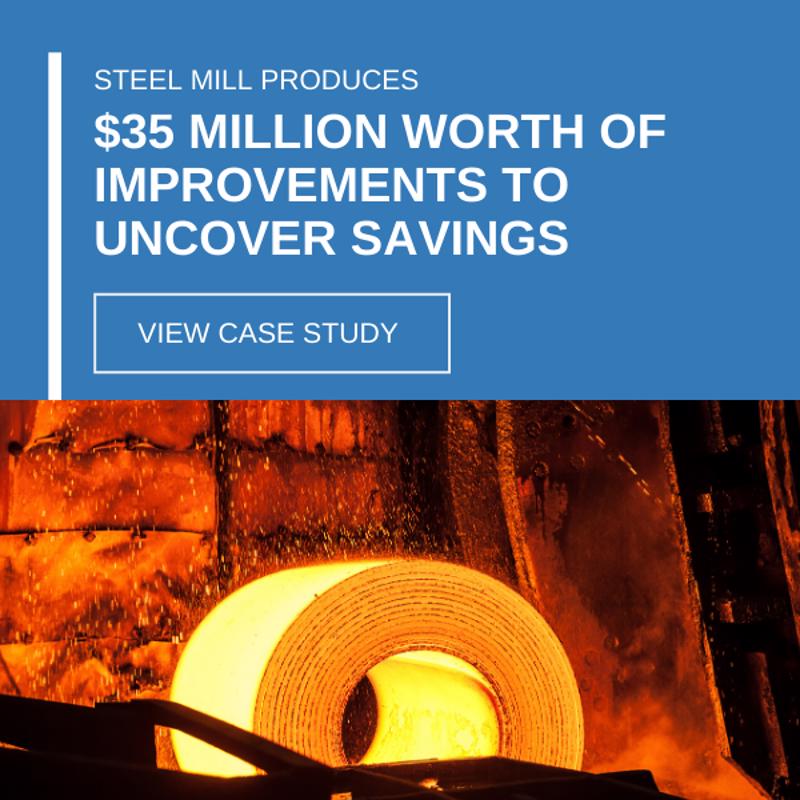-
Subscribe to Blog:
SEARCH THE BLOG
CATEGORIES
- Aerospace
- Asset Maintenance
- Automotive
- Blog
- Building Products
- Case Studies
- Chemical Processing
- Consulting
- Food & Beverage
- Forestry Products
- Hospitals & Healthcare
- Knowledge Transfer
- Lean Manufacturing
- Life Sciences
- Logistics
- Manufacturing
- Material Utilization
- Metals
- Mining
- News
- Office Politics
- Oil & Gas
- Plastics
- Private Equity
- Process Improvement
- Project Management
- Spend Management
- Supply Chain
- Uncategorized
- Utilities
- Whitepapers
BLOG ARCHIVES
- September 2025 (1)
- August 2025 (2)
- July 2025 (2)
- June 2025 (4)
- May 2025 (1)
- April 2025 (1)
- March 2025 (1)
- February 2025 (4)
- January 2025 (4)
- December 2024 (4)
- November 2024 (2)
- October 2024 (6)
- September 2024 (5)
- August 2024 (5)
- July 2024 (6)
- June 2024 (3)
- May 2024 (3)
- April 2024 (4)
- March 2024 (3)
- February 2024 (4)
- January 2024 (5)
- December 2023 (2)
- November 2023 (1)
- October 2023 (6)
- September 2023 (3)
- August 2023 (4)
- July 2023 (2)
- June 2023 (3)
- May 2023 (7)
- April 2023 (3)
- March 2023 (3)
- February 2023 (5)
- January 2023 (6)
- December 2022 (2)
- November 2022 (5)
- October 2022 (5)
- September 2022 (5)
- August 2022 (6)
- July 2022 (3)
- June 2022 (4)
- May 2022 (5)
- April 2022 (3)
- March 2022 (5)
- February 2022 (4)
- January 2022 (7)
- December 2021 (3)
- November 2021 (5)
- October 2021 (3)
- September 2021 (2)
- August 2021 (6)
- July 2021 (2)
- June 2021 (10)
- May 2021 (4)
- April 2021 (5)
- March 2021 (5)
- February 2021 (3)
- January 2021 (4)
- December 2020 (3)
- November 2020 (3)
- October 2020 (3)
- September 2020 (3)
- August 2020 (4)
- July 2020 (3)
- June 2020 (5)
- May 2020 (3)
- April 2020 (3)
- March 2020 (4)
- February 2020 (4)
- January 2020 (4)
- December 2019 (3)
- November 2019 (2)
- October 2019 (4)
- September 2019 (2)
- August 2019 (4)
- July 2019 (3)
- June 2019 (4)
- May 2019 (2)
- April 2019 (4)
- March 2019 (4)
- February 2019 (5)
- January 2019 (5)
- December 2018 (2)
- November 2018 (2)
- October 2018 (5)
- September 2018 (4)
- August 2018 (3)
- July 2018 (2)
- June 2018 (4)
- May 2018 (3)
- April 2018 (3)
- March 2018 (2)
- February 2018 (2)
- January 2018 (1)
- December 2017 (1)
- November 2017 (2)
- October 2017 (2)
- September 2017 (1)
- August 2017 (2)
- July 2017 (2)
- June 2017 (1)
- April 2017 (3)
- March 2017 (3)
- February 2017 (2)
- January 2017 (2)
- December 2016 (2)
- November 2016 (4)
- October 2016 (4)
- September 2016 (3)
- August 2016 (6)
- July 2016 (4)
- June 2016 (4)
- May 2016 (1)
- April 2016 (3)
- March 2016 (4)
- February 2016 (2)
- January 2016 (4)
- December 2015 (3)
- November 2015 (3)
- October 2015 (1)
- September 2015 (1)
- August 2015 (4)
- July 2015 (6)
- June 2015 (4)
- May 2015 (7)
- April 2015 (6)
- March 2015 (6)
- February 2015 (4)
- January 2015 (3)
CONNECT WITH US
Tag Archives: Construction Industry
Challenges like growing demand for sustainable practices, rising raw material costs, and a volatile construction market have forced the building materials industry to adapt quickly over the past few years. Right now, new technology and design strategies are transforming how buildings are made.
These technologies offer significant benefits — like reduced cost, minimal waste, and improved sustainability — that building materials manufacturers need to be aware of.
1. Smart Building Materials
Smart building materials are adaptive and change their properties based on changes in environmental conditions.
Smart glass, for example, can change transparency as needed to maximize the energy efficiency of a building.
In the summer months, when building owners need to keep a home or office cooler, an automated system can turn the glass translucent or opaque. This allows the glass to absorb solar radiation and prevent sunlight from heating the building. In winter months, the windows will “open,” turning transparent and letting in as much light and heat as possible.
These changes are often coordinated by a smart building system that may also be adjusting an intelligent HVAC system, or smart light fixtures that alter light output based on time of day and room occupancy.
Other smart materials include self-healing materials, self-adjusting concrete, and transparent metals. These materials may help to create more sustainable buildings that cost less to repair, maintain, and operate.
2. Additive Manufacturing
Additive manufacturing technologies — like 3D printing — help businesses create construction materials in a way that minimizes waste. Large, specialized 3D printers can be used in factories or on-site to print structures like concrete panels for new housing units.
This process can enable businesses to significantly accelerate the construction process. While 3D printing can’t fully automate construction yet — workers are still needed to insert rebar into printed concrete structures — new materials may soon change this.
Certain thermoset composites, for example, harden into stonelike structures as they cure, and offer strength that’s similar to rebar-reinforced concrete. These materials could help to further streamline construction.
3. Laser Measures
Precision in building materials is essential. A new structure, if it’s off-spec even by a few centimeters, can mean significant waste and setbacks as workers correct the structure.
Laser measures are alternatives to measuring tape and other “analog” tools. They use lasers to provide construction workers with accurate measurements on the construction site.
These tools offer a few key advantages over conventional measuring tools. Laser measures typically provide more accurate readings than conventional materials and can also be adjusted more easily. This can reduce the amount of time it takes to capture measurements in a large area, helping businesses to scale up construction operations.
Combined with other, more advanced measurement-taking methods — like construction-site VR and AR — these measures can help make construction much more efficient.

Composite roofing shingles are an example of building materials manufacturers technologies.
4. Sustainable Materials
The rising demand for sustainable materials has had a major impact on the building materials market. Materials like bamboo, composite roofing shingles, and reclaimed wood have emerged in the past few years as three options for businesses wanting to provide sustainable materials options to customers.
These materials typically have a much lower carbon footprint than comparable materials, like concrete, asphalt, or brick. Composite shingles, for example, are made from a combination of materials, often slate, laminate, and wood. They provide shingles with an appearance similar to ceramic or asphalt shingles, but that are lightweight and have a low carbon cost.
In some cases, they may also help a construction company drive down costs and reduce waste. Reclaimed wood, for example, enables construction companies to find a new life for wood that would have otherwise gone to a landfill.
The unique appearance of reclaimed wood has also made the material popular with some consumers — meaning that offering the material could enable building materials businesses to thrive in certain niche markets.
How New Technology Is Changing the Building Materials Market
These innovations are helping building materials manufacturers adapt to a changing construction market. Additive manufacturing techniques and measurement tools like laser measures are transforming how construction companies approach their work.
At the same time, the growing popularity of sustainable materials, like smart glass and composite shingles, is making it easier for providers to offer sustainable material options to their customers.
*This article is written by Devin Partida. Devin is a tech writer with an interest in the IIoT and manufacturing. She is also the Editor-in-Chief of ReHack.com.
COVID-19 has been a take-no-prisoners virus. In mere months, thousands of businesses have folded in a variety of industries or are on the verge of closing. Some sectors have proven to be more resilient than others though. For instance, while a number of economists anticipated real estate would likely be hard-hit, the combination of solid economic fundamentals as well as record-low interest rates have kept the industry humming. Indeed, the Pending Home Sales Index reached nearly 9% in August and the existing-home sales topped a seasonally adjusted annual rate of 6 million during the same period, according to the latest estimates from the National Association of Realtors. Engaged buyers and highly limited inventory have kept builders hard at work nationwide.
Despite the residential housing sector’s strength, 2020 will likely be remembered as a down year for developers.
When 2020 officially concludes, the construction industry in the U.S. is anticipated to be 6.5% smaller than it was when the year began. That’s according to a recent report from ResearchandMarkets.com. If conditions continue at their present pace, the sector is poised to contract an additional 2% come 2021.
Coronavirus disruption in construction
The coronavirus is largely responsible. With over 7 million Americans infected by the strain and a variety of social distancing measures installed by states as well as employers, numerous projects that were slated to take place have been delayed, rescheduled, or started but with far fewer workers than initially anticipated. In some instances, this has been due to laborers who were sick; in others, developers were limited to having only so many people on job sites at once.
“In September, wood used for framing reached $950 per thousand board feet.”
Complicating matters further is the price of home-building materials, especially lumber. Forestry and logging companies have encountered their own struggles with the exploration and extraction of trees due to COVID. This, in turn, has led to higher purchase prices for developers. For example, in September, wood used for framing reached $950 per thousand board feet, according to the National Association of Builders. Tracing back to April, lumber prices in the U.S. are up 120%, on average. As a result of this, the cost of buying for would-be homeowners has risen roughly $16,000, NAHB estimates, stretching the finances of many budget-minded families too thinly.
What can building product manufacturers do to bounce back in 2021? Here are a few suggestions:
Embrace the new business as usual
Perhaps the biggest frustration of the COVID-19 crisis is the uncertainty of it all, as no one seems to know when advanced safety measures to slow the spread will end. While most parts of the country now allow laborers to be on the job — whereas before they were off-limits — roughly three-quarters of building product manufacturers believe COVID-19 restrictions will continue for another year, according to polling done by Construction Dive. More specifically, 88% expect social distancing and personal protective gear will be the norm for the long term.
As a result of this, businesses should try to acclimate themselves to the reality of having fewer hands. Whether it’s done by leveraging automation technology to tackle repeatable processes, or streamlining production through smarter asset utilization, building product manufacturers will need to ramp up their process efficiencies so workers can execute more effectively.
Prepare and source even further in advance
In addition to lumber being more expensive to purchase, it’s also harder to come by. As Newsweek reported earlier this summer, COVID-19 restrictions forced numerous lumber mills across the U.S. to cut back on their production, both for softwood lumber and treated lumber.
When the time comes to obtain material for a scheduled project, manufacturers may want to stock up. This is something that Jeffrey Luter of Fulcrum Associates has done and plans on continuing. Speaking to New Hampshire Business Review, Luter noted his company has extended its purchasing window rather considerably.
“Items that we would source three to four weeks before they are needed on the job site are being ordered 10-12 weeks in advance,” Luter explained.
Adopting a more forward-looking strategy can enable building product manufacturers to better prepare for fluctuations in the supply chain, which are forecast to continue in 2021.

Building product manufacturers look to keep employees safe and well.
Keep crew safe and well
With many building product manufacturers operating with skeleton crews, the ongoing productivity of each individual becomes that much more important. However, with construction routinely being among the top industries for on-the-job industries, developers must prioritize the protection of all involved. This includes keeping laborers protected from infection. Tom Sullivan of Sullivan Construction told NHBR this has been an ongoing process throughout the pandemic.
“We take the temperature every day of everybody who comes on-site,” Sullivan said. “We apply social distancing to our projects. We have a mask requirement for all people on our job sites — including people from our group and myself. We want to make sure nobody gets sick. Our objective is to keep everybody healthy and use the latest and greatest protocols out there to protect everyone.”
Prioritize supply chain management
In addition to fully operational work crews, builders also require the materials to build. But as previously noted, key materials and equipment to development are either in short supply, virtually impossible to find or expensive to purchase. As a result, building products manufacturers should aim to optimize their supply chains as proactively as they can. This includes diversifying where they get their materials from so firms have more options and places to go when suppliers are out of stock. Strategic sourcing can help in this regard.
Building product manufacturers may also want to perform their own research to see where it’s possible to use one material in place of another. Former NAHB Chairman Randy Noel said certain alternative materials — such as steel — may serve as a sufficient option as a substitute for lumber. As the Steel Market Development Institute points out, steel may prove more cost-effective than wood framing because it won’t warp, split, crack or rot like wood does.
From strategic sourcing to efficiency improvements or cycle time reduction, USC Consulting Group has the solutions that can help your business find it’s footing in the building products landscape — in more ways than one. Contact us today to learn how we can help you be more efficient in your operations.








